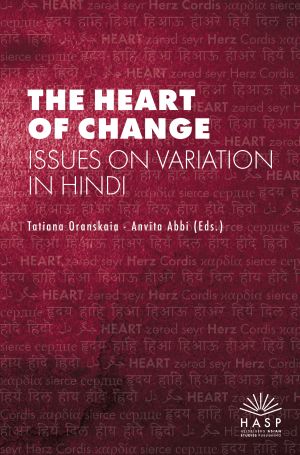How to Cite
License (Chapter)

This work is licensed under a Creative Commons Attribution-ShareAlike 4.0 International License.
Identifiers (Book)
Published
Animacy, Specificity, and Verb Semantics
What Drives Differential Object Marking in Hindi?
This article aims to explore the dynamics of differential object marking (DOM) in Hindi. In Hindi, the ko-marking of the direct object (DO) is known to be influenced by two factors: animacy and definiteness or specificity. The marking of the inanimate object depends on the definiteness or specificity of the object. Unmarked inanimate objects can be interpreted as both definite and specific or indefinite and non-specific, but when the inanimate object is marked with ko, it can only be interpreted as definite and/or specific. The definiteness/specificity opposition raises some questions: linguists do not seem to agree on which terminology to use. Some use definiteness and specificity as interchangeable concepts, others mention either definiteness or specificity, again others describe these factors as differentially influencing. This brings us to the following research question: do definiteness and specificity play different roles in the ko-marking of the DO? If so, which definitions of definiteness/specificity are pointedly applicable, and what are the different roles of these factors? Furthermore, how do they interact with animacy? Generally, animate arguments are marked with ko. However, Mohanan (1994) gives examples of animate non-specific and indefinite DO’s which are not ko-marked. Is this a rule or are there exceptions? Another influencing factor to be considered is the verb semantics. Several linguists describe that the ko-marking in Hindi also depends on the selectional properties of the verb. This asks for further investigation: does the DO of a certain verb always get ko-marked, and, vice versa, are there verbs of which the DO is never marked? To answer these questions, our methodological approach will be twofold: firstly, we will perform a literature study of existing textbooks and grammars of Hindi to explore the different ways in which DOM in Hindi is being described and taught. Secondly, we will conduct a brief analysis of examples taken from the EMILLE corpus of Spoken Hindi and the Corpus of Spoken Hindi to find the frequencies of occurrence of ko-marked objects (as opposed to zero marking) and their correlation with the semantic parameters of animacy, definiteness, specificity and verb meaning.
Keywords Hindi, differential object marking, corpus linguistics








